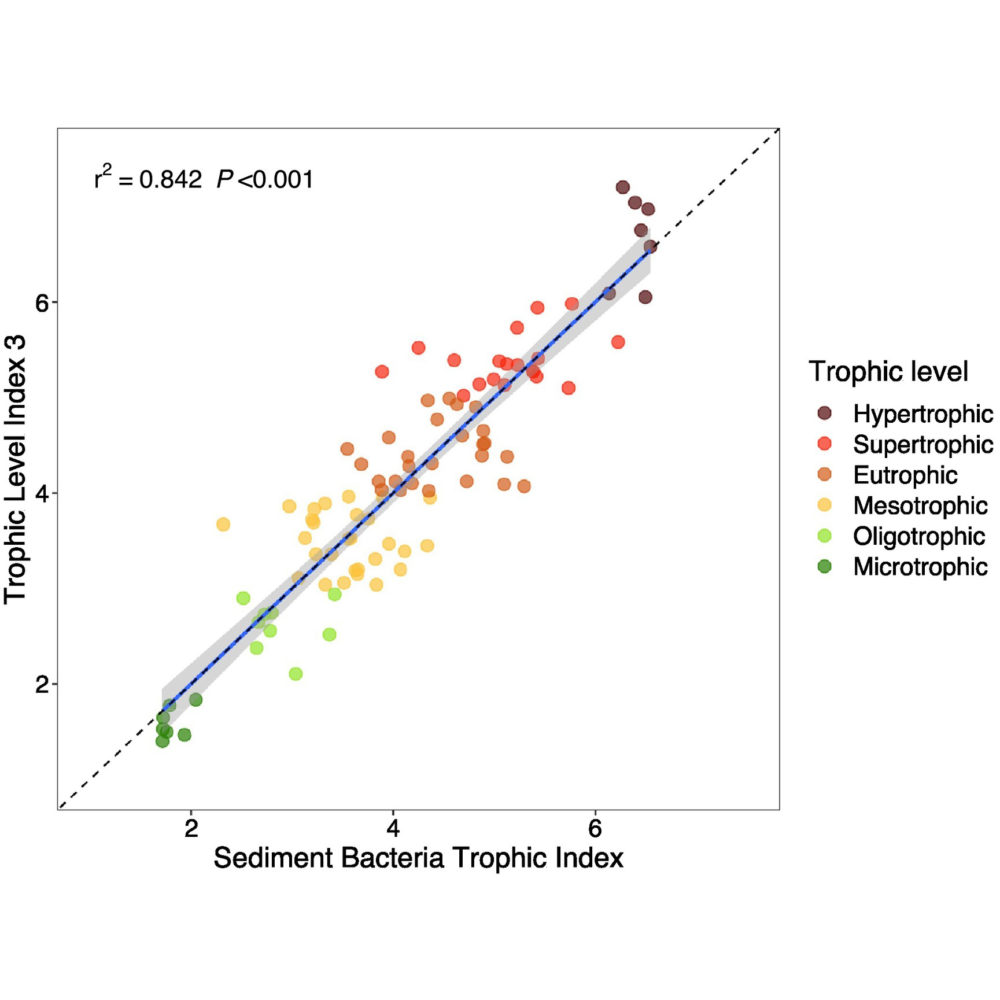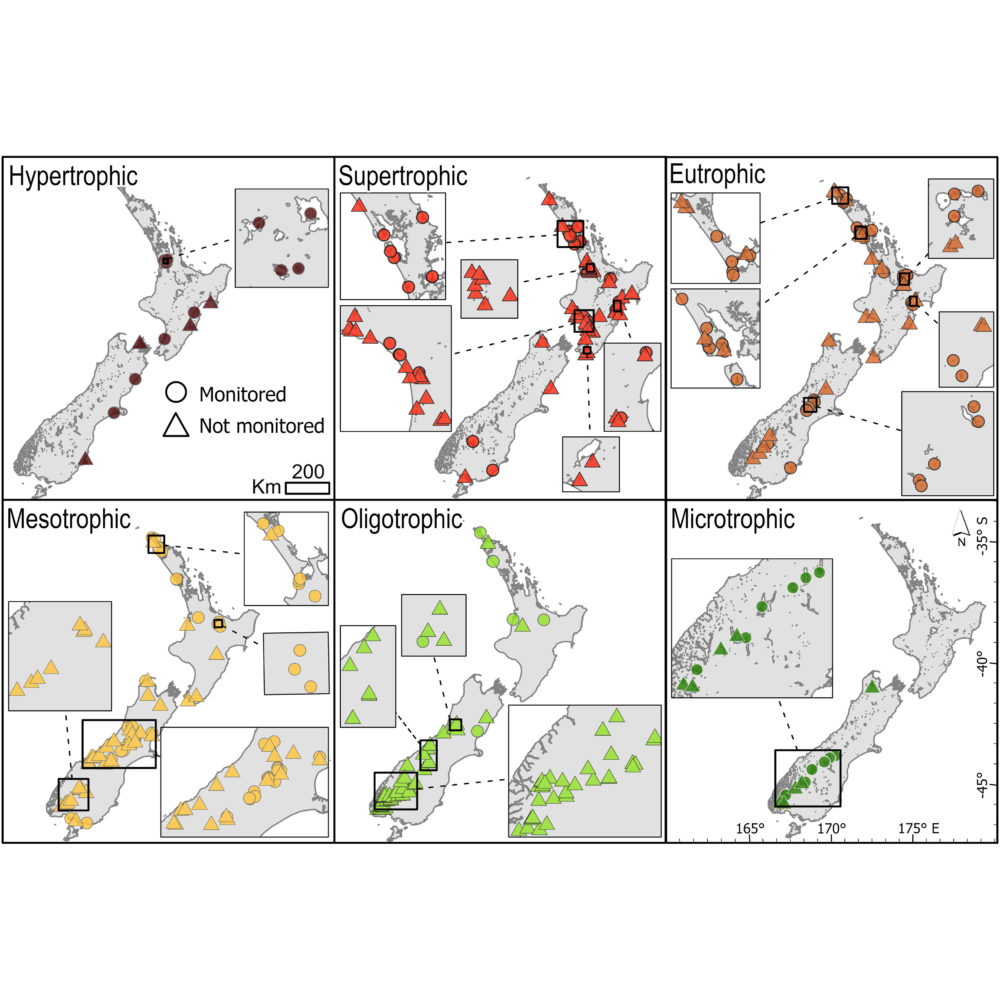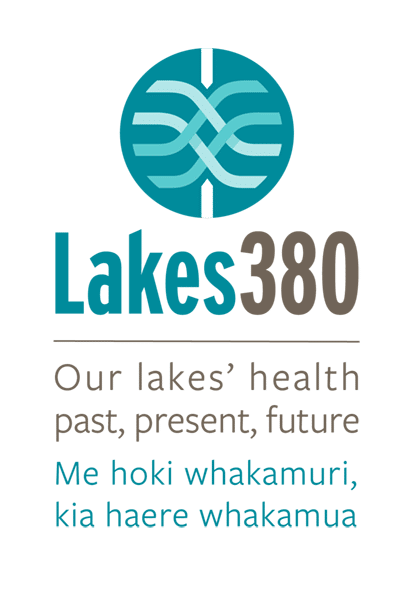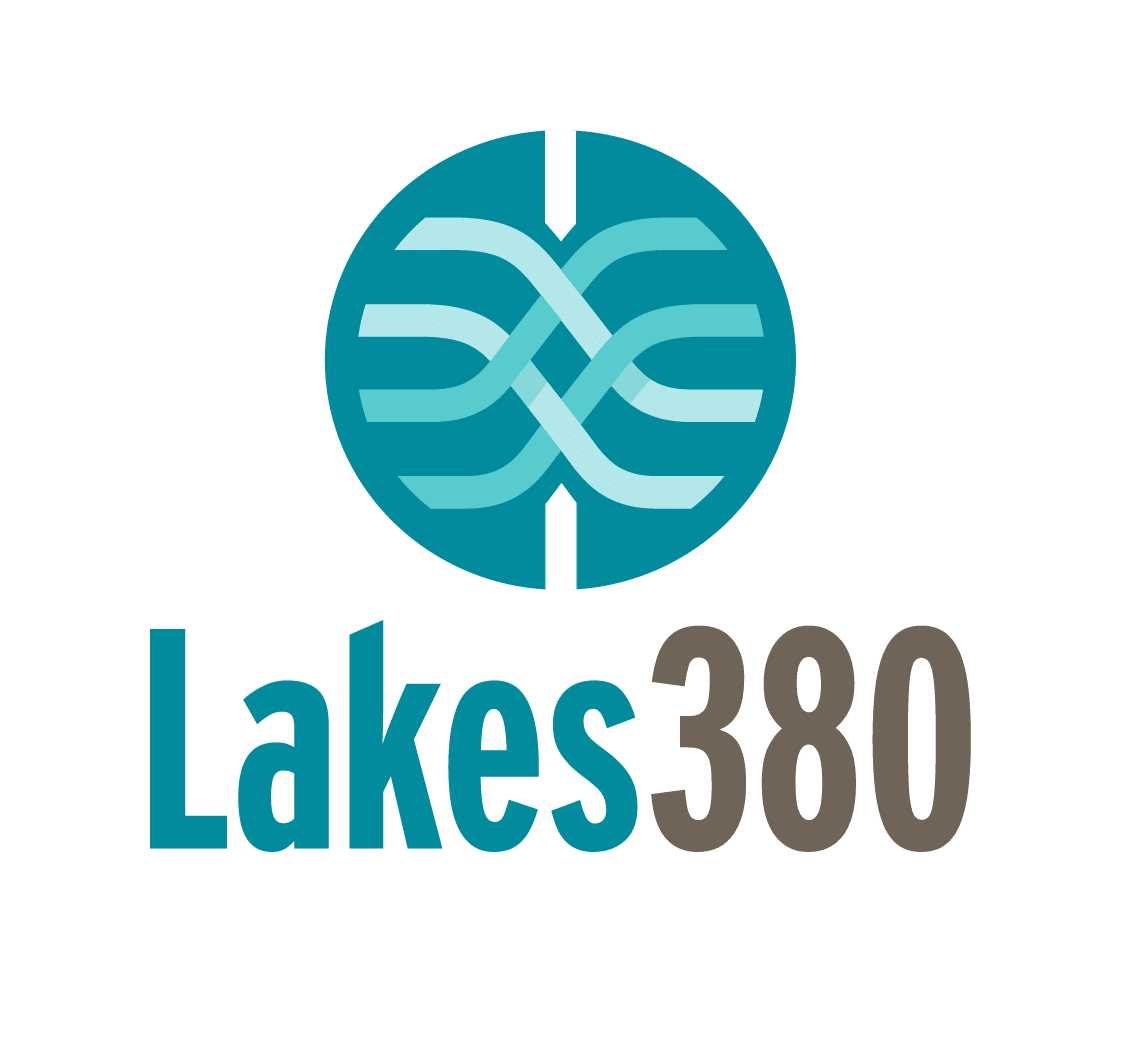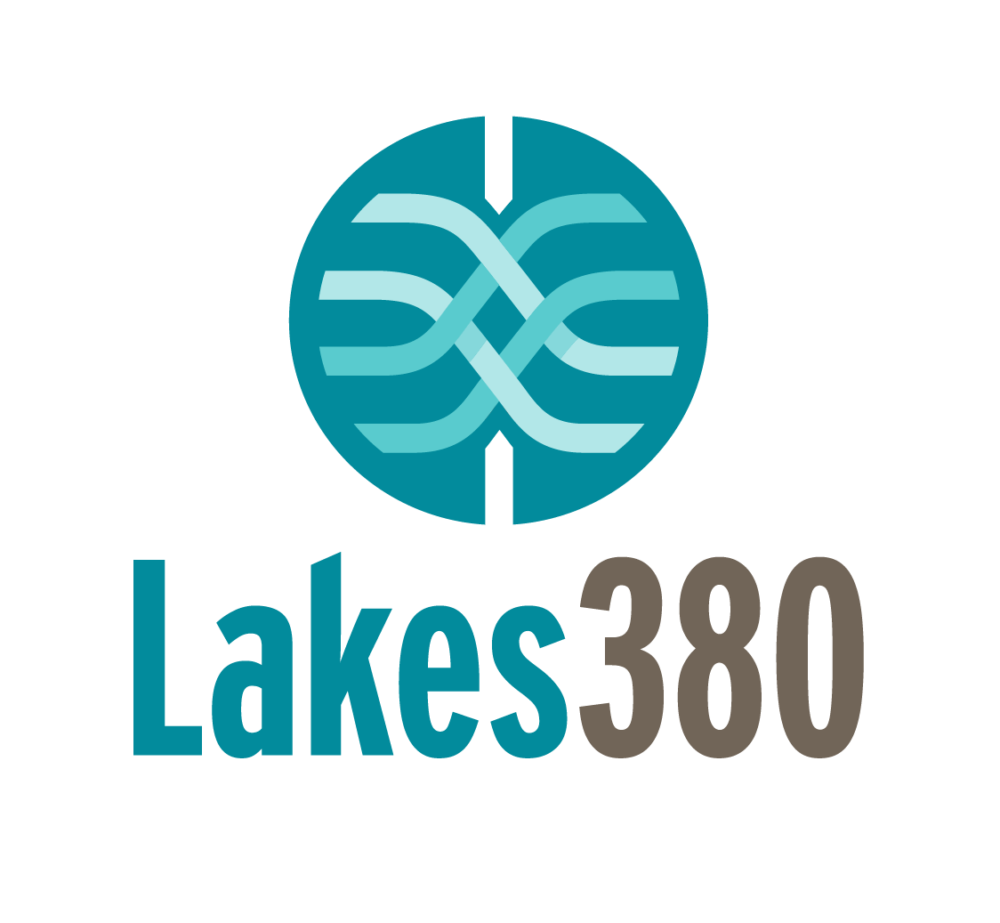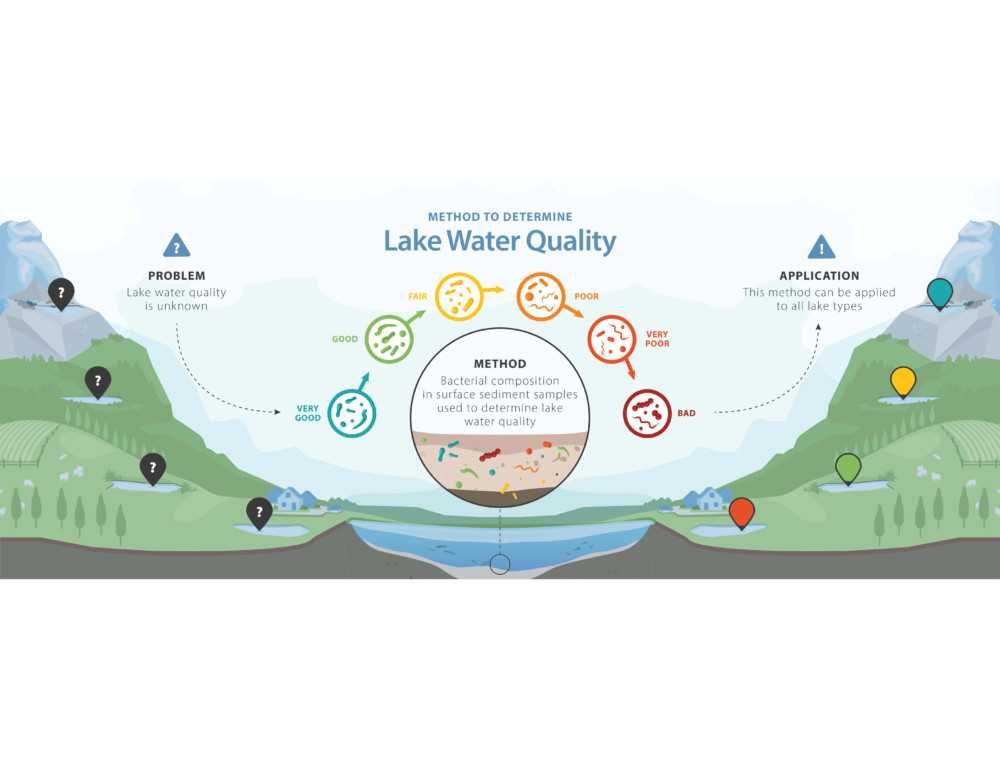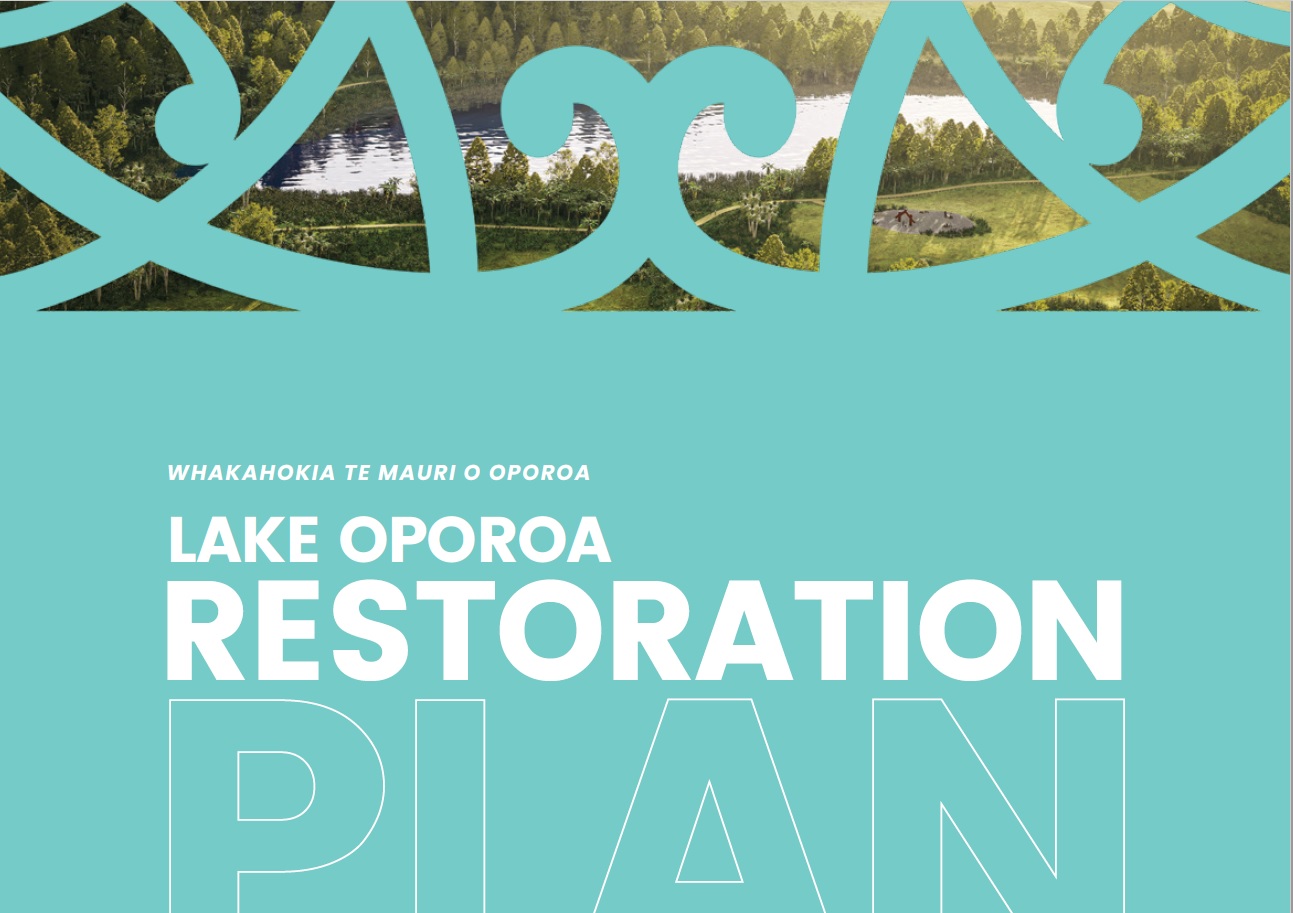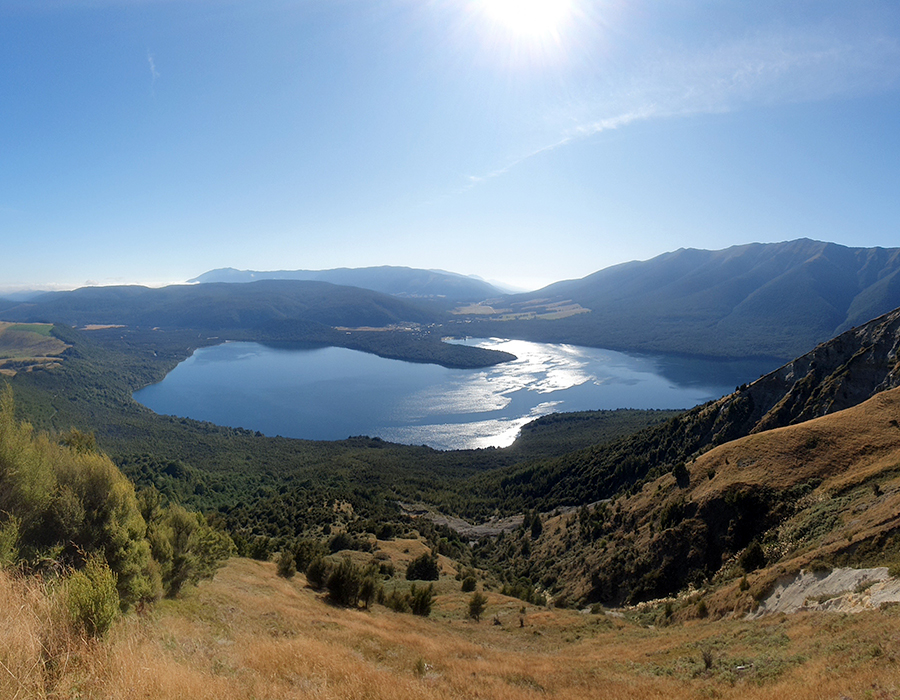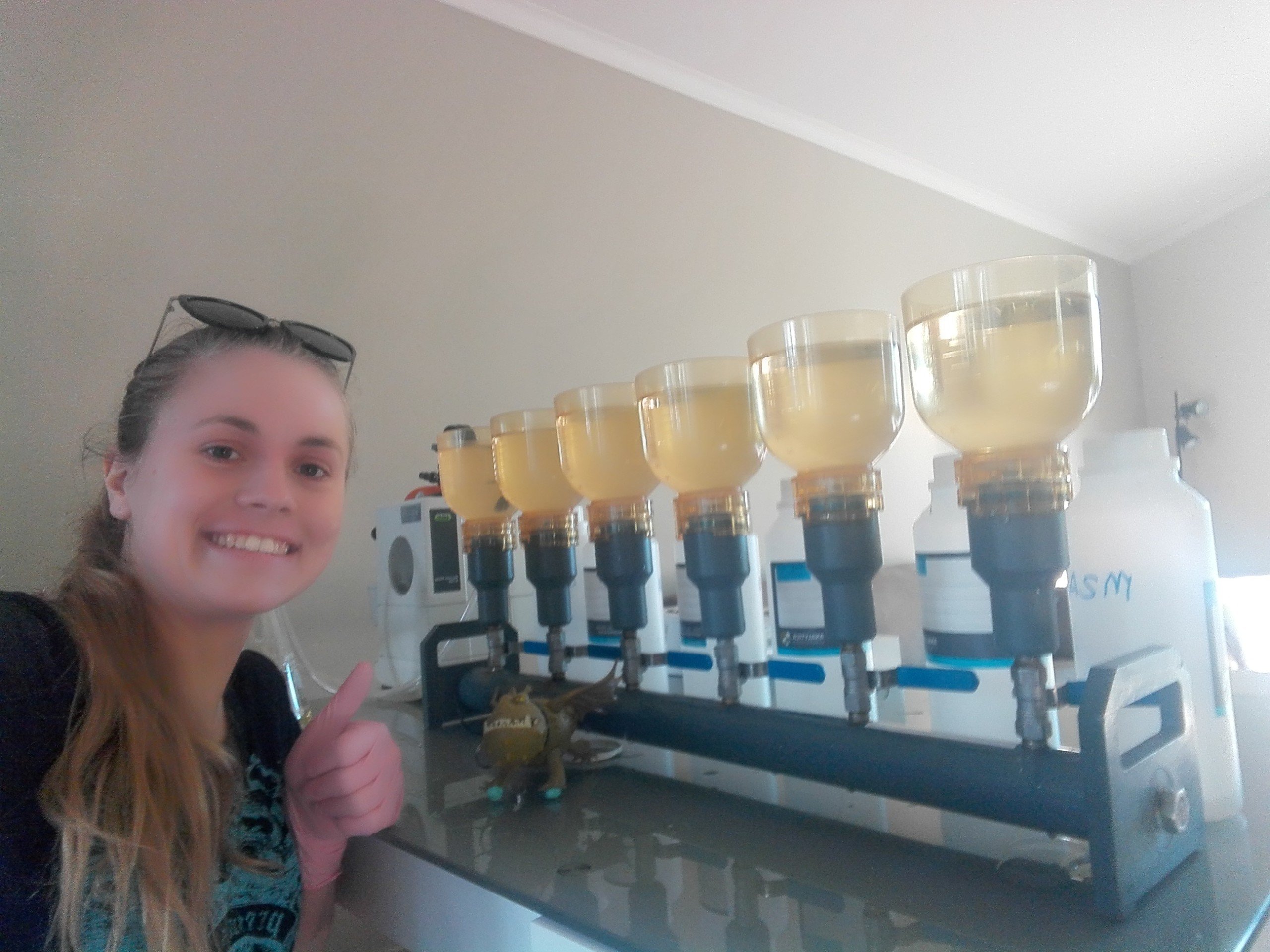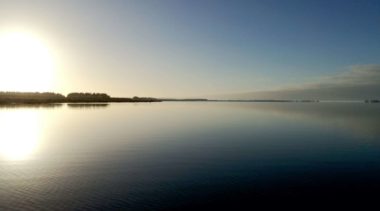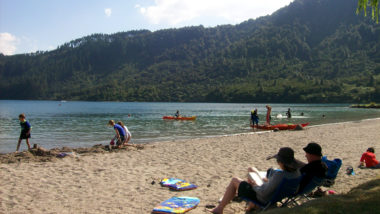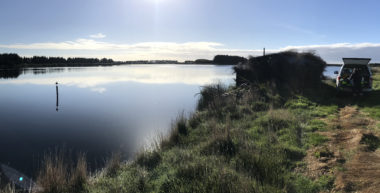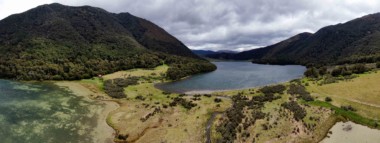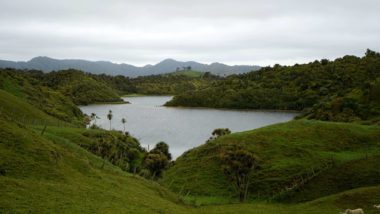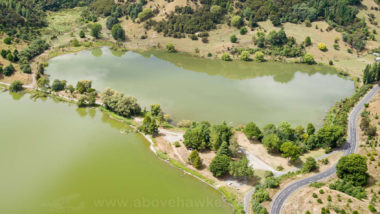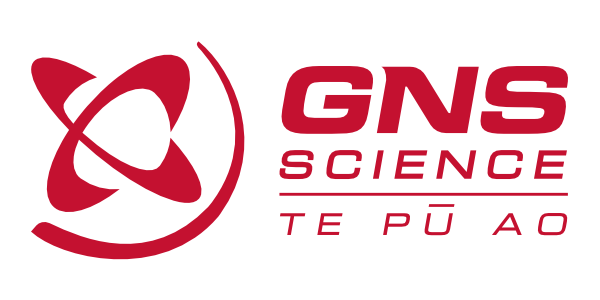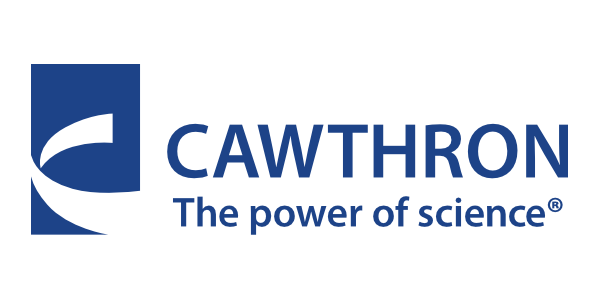Our first manuscript that uses our national surface dataset has been published. You can see the manuscript here or email [email protected] for a copy.
The Lakes380 team has successfully developed a DNA-based method that uses bacteria to assess the current water quality of a lake.
Lakes around the world are being transformed by human actions. Traditional monitoring methods require frequent sampling over multiple years. These tools urgently needed modernisation, and this DNA-based method is our team’s solution.
The team developed the tool using data from lakes which are regularly monitored and showed there was a very good relationship between the two methods (see the graph below).
This method has now been used to predict the water quality of 255 lakes sampled as part of the Lakes380 programme. Of these 159 had never previously been monitored (see map below). Most of the lakes (59 out of 67) with good water quality were in the South Island. In contrast, 100 of the 123 lakes with poor or very poor water quality were in the North Island. Of these lakes, 65% were in catchments dominated by high intensity agriculture.
This new, robust DNA-based tool provides a rapid and cost-effective method that will allow a greater number of lakes to be monitored and more effectively managed in Aotearoa and globally.
